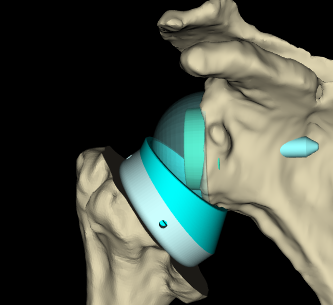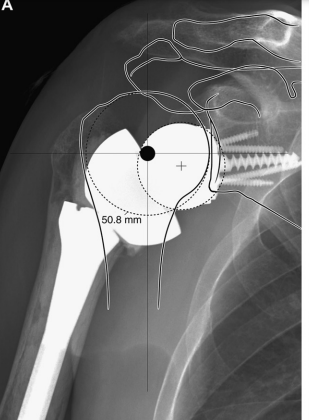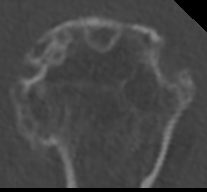|
The inlay stem offers specific advantages
1. bone conservation 2, easier revision 3. less calcar resorption 4. helpful in small patients 5. less tendency to stuff the joint
0 Comments
IMO, importing the post operative xray image into the software program may be helpful. assessment of lateralization, distalization, DSA and positioning of the implant
a DSA between 40° and 65° results in better active anterior elevation and abduction  using an inlay system, the DSA is reduced to 62 degrees and distatlization is 17 mm Maybe distalization greater than 20-25 mm may result in a difficult reduction. A lower neck cut, smaller sphere , or using an inlay stem are options. I think (opinion) the preop planning software to include DSA to anticipate tightness of shoulder reduction
The COR was medially displaced by 28 4 mm with the Delta prosthesis and by 19 3 mm with the Encore prosthesis Matthew D. Saltzman, MDa , Deana M. Mercer, MDc , Winston J. Warme, MDb , Alexander L. Bertelsen, PA-Cb , Frederick A. Matsen III, MDb, * : Frederick A. Matsen III, MD, Department of Orthopedics and Sports Medicine, University of Washington Medical Center, Box 356500, 1959 NE Pacific St, Seattle, WA 98195. E-mail address: [email protected] (F.A. Matsen III).
Causes of a tight shoulder with a reverse shoulder arthroplasty: SUPERIOR HUMERAL MIGRATION MEDIALIZED HUMERUS TIGHT CAPSULE HIGH NECK CUT EXCESSIVE LATERALIZATION OF BASE PLATE EXCESSIVE LATERALIZATION OF SPHERE LARGE MUSCULAR MALE LOW GLENOSPHERE OVERSIZED GLENOSPHERE ONLAY SYSTEM INTACT ROTATOR CUFF PRIOR SURGERY PREOPERATIVE STIFFNESS LARGE DELTOID INCOMPLETE PARALYSIS FAILED INTERSCALENE BLOCK Expect a tight reduction of the reverse shoulder if the preop planning software shows a distalization greater than 20 mm and DSA angle greater than 60 degrees in my opinion. This is not validated.
J Shoulder Elbow Surg 2012 Sep;21(9):1136-41. Glenoid morphology rather than version predicts humeral subluxation: a different perspective on the glenoid in total shoulder arthroplastyHeinz R Hoenecke Jr 1, Lisa M Tibor, Darryl D D'Lima Glenoid version did not correlate with humeral subluxation. The highest frequency of posterior subluxation was noted in biconcave glenoids. Bone & Joint OpenVol. 3, No. 6 Shoulder & ElbowIs there a correlation between humeral osteoarthritis and glenoid morphology according to Walch?Philipp Vetter Petra Magosch Peter Habermeyer Increased humeral osteophyte length correlated with a higher grade of glenoid morphology (A1-A2-B1-B2-B3) according to Walch (r = 0.672; p < 0.0001). The criteria of humeral OL and HH morphology are associated with increasing glenoid retroversion, posterior humeral subluxation, and eccentric glenoid wear. Therefore, humeral radiological parameters might hint at the morphology on the glenoid side. In a small sample size, I have found a corrrelation between posterior humeral subluxation and glenoid version Small anatomy;
degenerative tuberosity cysts; glenoid version 13 degrees 80% posterior humeral subluxation Lateralized offset humerus Are these factors to consider? Humeral retroversion is variable among individuals, and there are several measurement methods.
The mean humeral retroversion was 31.42° ± 12.10° using CT methods; the method using the bicipital groove center showed lower concordance, whereas the method using the posterior margin of the bicipital groove demonstrated higher concordance Predicting humeral head retroversion preoperatively may be helpful although 10 degrees may not be significant |
CommunityShare your insights and experience with total and reverse shoulder replacement surgery; please reference link to www.completeshoulder.com CategoriesArchives
December 2022
Categories |












 RSS Feed
RSS Feed